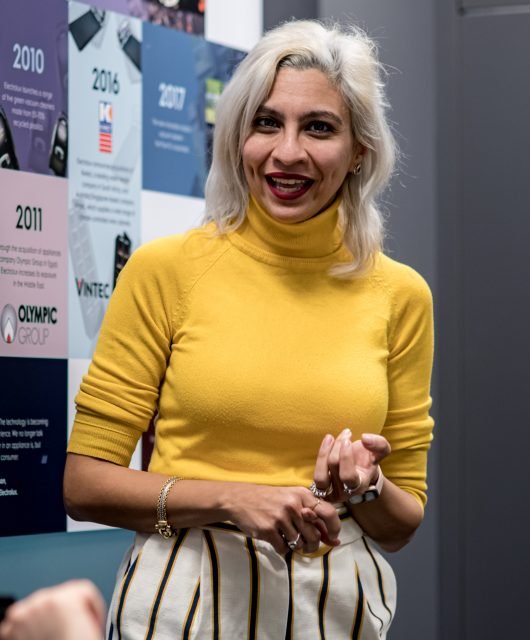5 Recent Digital Marketing Challenges In Egypt And How To Think About Them, By Wavemaker’s Amr Tarek
Challenging times have been always the best times for making brave decisions and true reflections, and Marketers all over the globe have faced some challenging times over the past two years and the challenging times are now recurring with new formulas and new challenges that need different decisions and different ways of looking at the market, the consumers and for sure marketing, especially digital marketing and how we utilize it.

Also, as a tax of globalization, fast exchange of data, and the huge clutter of information consumed by the single human on daily basis, it has become extremely difficult to find a credible market analysis that is localized and reflects the truly unique experience and recommendations which fit our market in Egypt and not GCC or MENA flavored.
The upcoming parts of this article will try to create some reflections and offer some food for thought regarding some challenges faced on daily basis by Egyptian digital marketers post COVID normalization (Hopefully!) Fintech invasion, e-commerce hybrid shopper experiences, and finally crypto-economy early signals.
- The Multiverse of programmatic:
In 2022 the digital population in Egypt has reached 71% of the total population and 51% of the population are active users of social media, accordingly that created a lot of complex and multi-layered audience segments across different socio-economic classes.
Those segments require more effort from digital marketers to reach the maximum efficiency and precision to obtain a personalized purchase journey for each segment.
To tackle that, marketers in Egypt were highly optimistic about continuously emerging programmatic networks and solutions which promised advanced targeting techniques, creative ad formats, premium placements, and precision at scale.
But after a while, most of these solutions have faced almost the same challenges, especially in the Egyptian market which were mainly lack of reach due to having few local portals in the network, higher pricing benchmarks compared to traditional solutions vs forecasted ROAS, also most of those solutions lacked the true unique selling point or exclusive feature to select a solution over another.
And that leaves us with a final food for thought which is: Egypt needs to have a strong local programmatic network with competitive pricing and targeting capabilities that fits the market needs in the light of the cookie-less future and that needs true collaboration from all the market stakeholders in Egypt without ignoring the regional success stories in the same regard.
- E-commerce multiple heads:
15% of the digital population in Egypt use e-payment solutions and 41% of the same population made e-commerce purchases for a product or a service each week, strong facts that have created multiple e-commerce small and medium businesses to rise and shine also after the e-shopping facilities from Instagram shops and commerce management on META products, accordingly the e-commerce marketing funnel has transformed into multiple paths with different heads and tails.
And that leaves us with a final food for thought which is: Conversion tracking, event-based targeting, and tech integrations are no more luxurious knowledge for digital experts in Egypt, but that knowledge has become a core building block in the digital business model starter pack.
- Marketers vs Market:
Upon studying the latest market insights for Egypt in 2022, some interesting facts were found that cannot be thought credible from the point of view of the normal digital marketer in Egypt
(Example: The average time spent listening to podcasts has increased by 36% in Egypt through last year)
and that takes us to the fact that due to the rich and connected marketing and media networks in Egypt the market is under the influence of certain stereotypes and expectations regarding the Egyptian consumer and different Egyptian social classes which accordingly affects all the cycles of creative ideation, media planning and post-marketing campaign analysis which gradually are becoming misleading since the campaigns are judged by the minds and tastes of the marketers themselves and the rest of the market might have another opinion.
And that leaves us with a final food for thought which is: Digital marketing teams should rely more than ever on in-depth research papers combined with multiple focus groups along with A-B testing and pre-launch analysis to identify more comprehensive feedback about marketing campaigns regardless of the objective via seeing it from multiple points of views and multiple market-digital and on-ground-stakeholders.
- Attack on titles:
The positive and dynamic atmosphere of newly emerging startups, tech companies, young founders, promising talents, and uncommon functions to serve newly created business models is a double-edged weapon that created the chance of having shiny titles with vague and changing job descriptions, especially in the field of digital media planning, buying mixed with digital AdOps function along with growth hacking and digital strategists.
And that leaves us with a final food for thought which is: That there is a thin line between having a multi-talented resource in your team and dissolving the power of specialization, so the wise business leadership should know the right time to have both onboard according to the team dynamics and the business needs in addition to the nature of clients or consumers.
- Learning Dehydration:
At the beginning of the pandemic, the appetite for exchanging knowledge skyrocketed due to the lack of real human interaction and physical gatherings, which gradually normalized the idea of virtual workshops for technical and non-technical training till they became recently even post-covid the default format of training.
That resulted in the deprivation of the younger marketers of the richness of industry physical events that created multiple opportunities for exposure, networking, and knowledge sharing and most virtual pieces of training gradually lost their shine and effectiveness due to overusing them for different purposes and objectives.
And that leaves us with a final food for thought which is: That technology adaptation to create virtual knowledge sharing has saved a lot of effort, time, and resources for a lot of organizations and the knowledge seekers also It has opened endless opportunities to access and benefit from experts in multiple fields around the world, yet the right balance between virtual and physical learning experiences should always be there to keep both types of learning at the same level of effectiveness and positive impact on all the market stakeholders.
Useful Resources:
- https://datareportal.com/reports/digital-2022-egypt
- https://www.gwi.com/reports/egypt-consumers#download
- https://www.warc.com/content/paywall/article/WARC-Exclusive/Headless_commerce_Incremental_gains_and_exponential_change/en-GB/135737?#collections-bottom
- https://www.shrm.org/hr-today/news/hr-magazine/spring2021/pages/virtual-reality-training-spreads-its-wings.aspx
- https://core.ac.uk/download/pdf/234696234.pdf
- https://content-na1.emarketer.com/global-media-intelligence-2021-egypt
- https://content-na1.emarketer.com/africa-fintech-boom-funding-momentum-builds-record-2021-nigeria





